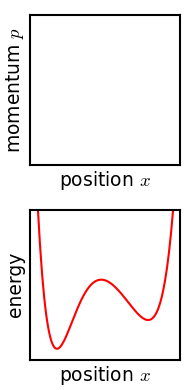
Back ديناميكا نجمية Arabic Ulduz dinamikası Azerbaijani Dinàmica estel·lar Catalan Stellardynamik German Dinámica estelar Spanish Stellaardünaamika Estonian Dynamique stellaire French Stellardynamik LB Ѕвездена динамика Macedonian Stjernedynamikk NB
Stellar dynamics is the branch of astrophysics which describes in a statistical way the collective motions of stars subject to their mutual gravity. The essential difference from celestial mechanics is that the number of body


Typical galaxies have upwards of millions of macroscopic gravitating bodies and countless number of neutrinos and perhaps other dark microscopic bodies. Also each star contributes more or less equally to the total gravitational field, whereas in celestial mechanics the pull of a massive body dominates any satellite orbits.[1]
- ^ Murdin, Paul (2001). "Stellar Dynamics". Encyclopedia of Astronomy and Astrophysics. Nature Publishing Group. p. 1. ISBN 978-0750304405.
